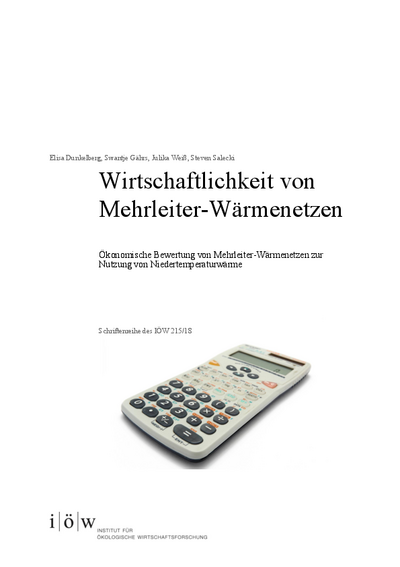Economic Feasibility of a Multi-Conductor District Heating System
By making possible the integration of renewable heat sources that otherwise could not be (entirely) utilized, the LowEx multi-conductor heating grid can make a positive contribution to climate protection. Most of renewable heat sources, as well as many waste heat sources, provide low-temperature heat; district heating usually operates on high supply and return temperatures. Furthermore, there is also a partial demand on the consumer side for high-temperature levels. Solutions are needed to deal with this diversity of temperature requirements at the neighborhood level. To solve this challenge, a multi-conductor district heating grid approach was developed, and its conceptual feasibility investigated from an economic perspective. The analysis takes into account the various perspectives of the different stakeholders; operators of the heat generation plants, grid operators, consumers, and the municipality. Despite higher investment costs in the scenarios with the multi-conductor grid, the total costs equal the costs of a building-specific heating supply scenario for the same level of renewable energies. However, an impediment to the implementation of such multi-conductor heating grids lies in older existing buildings, where the heat production costs of gas and oil boilers are often lower than the cost of heat supplied by a multi-conductor heating grid. In order to increase the competitiveness of the investment-intensive multi-conductor heating grid, some adjustments to the competitive framework are necessary. Favorable conditions include improved funding, the introduction of a carbon tax on fossil energies and/or legal requirements stipulating the renewable energy share in the building stock and grid-based heating.



